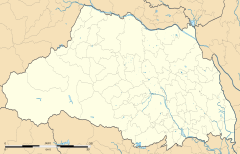Kotesashi Station
SI19 Kotesashi Station 小手指駅 | ||||||||||||||||||||||||||||||||||||||||
|---|---|---|---|---|---|---|---|---|---|---|---|---|---|---|---|---|---|---|---|---|---|---|---|---|---|---|---|---|---|---|---|---|---|---|---|---|---|---|---|---|
 The north entrance in September 2016 | ||||||||||||||||||||||||||||||||||||||||
| General information | ||||||||||||||||||||||||||||||||||||||||
| Location | 1-8-1 Kotesashi-chō, Tokorozawa-shi, Saitama-ken 359-1141 Japan | |||||||||||||||||||||||||||||||||||||||
| Coordinates | 35°48′03″N 139°26′18″E / 35.8008°N 139.4382°E | |||||||||||||||||||||||||||||||||||||||
| Operated by | ||||||||||||||||||||||||||||||||||||||||
| Line(s) | ||||||||||||||||||||||||||||||||||||||||
| Distance | 29.4 km from Ikebukuro | |||||||||||||||||||||||||||||||||||||||
| Platforms | 2 island platforms | |||||||||||||||||||||||||||||||||||||||
| Tracks | 4 | |||||||||||||||||||||||||||||||||||||||
| Connections | Bus stop | |||||||||||||||||||||||||||||||||||||||
| Other information | ||||||||||||||||||||||||||||||||||||||||
| Station code | SI19 | |||||||||||||||||||||||||||||||||||||||
| Website | Official website | |||||||||||||||||||||||||||||||||||||||
| History | ||||||||||||||||||||||||||||||||||||||||
| Opened | 20 November 1970 | |||||||||||||||||||||||||||||||||||||||
| Passengers | ||||||||||||||||||||||||||||||||||||||||
| FY2019 | 48,781 daily | |||||||||||||||||||||||||||||||||||||||
| Services | ||||||||||||||||||||||||||||||||||||||||
| ||||||||||||||||||||||||||||||||||||||||
| Location | ||||||||||||||||||||||||||||||||||||||||
Kotesashi Station (小手指駅, Kotesashi-eki) is a passenger railway station located in the city of Tokorozawa, Saitama, Japan, operated by the private railway operator Seibu Railway.
Lines[edit]
Kotesashi Station is served by the Seibu Ikebukuro Line from Ikebukuro in Tokyo, with some services inter-running via the Tokyo Metro Yurakucho Line to Shin-Kiba and the Tokyo Metro Fukutoshin Line to Shibuya and onward via the Tokyu Toyoko Line and Minato Mirai Line to Motomachi-Chukagai. Located between Nishi-Tokorozawa and Sayamagaoka, it is 29.4 km from the Ikebukuro terminus.[1] All services except Chichibu and Musashi limited express as well as the S-Train services stop at this station.
Station layout[edit]
The station consists of two ground-level island platforms serving four tracks.[2]
Platforms[edit]
| 1/2 | for Tokorozawa, Nerima, and Ikebukuro | |
| 3/4 | for Hannō and Seibu-Chichibu |
Facilities and accessibility[edit]
Toilet facilities are located on the elevated concourse, inside the ticket barriers. Escalator and lift access is provided to and from both sets of platforms.
-
The south entrance in September 2016
-
The ticket barriers in September 2016
-
The concourse and station toilets inside the ticket barriers in September 2016
-
The up end of the platforms in September 2016
-
The down end of the platforms in September 2016
History[edit]
The station opened on 20 November 1970.[1]
Station numbering was introduced on all Seibu Railway lines during fiscal 2012, with Kotesashi Station becoming "SI19".[3]
Through-running to and from Yokohama and Motomachi-Chukagai via the Tokyu Toyoko Line and Minatomirai Line commenced on 16 March 2013.[4]
Passenger statistics[edit]
In fiscal 2019, the station was the 43rd busiest on the Seibu network with an average of 48,781 passengers daily.[5] The passenger figures for previous years are as shown below.
| Fiscal year | Daily average |
|---|---|
| 2000 | 44,622[1] |
| 2010 | 48,668[6] |
| 2011 | 46,571[7] |
| 2012 | 47,336[8] |
| 2013 | 48,338[8] |
| 2014 | 48,058[9] |
| 2015 | 48,696[10] |
Surrounding area[edit]
Seibu's Kotesashi Depot is located to the north of the tracks immediately to the west of the station.[2]
South side[edit]

- Kitanoten Shrine
- Waseda University Tokorozawa Campus
- Saitama Prefectural Tokorozawa Nishi High School[11]
- Saitama Prefectural High School of the Arts
- Tokorozawa Municipal Kitano Junior High School
- Tokorozawa Municipal Kotesashi Junior High School
- National Hospital Organization Nishisaitama Chuo National Hospital
 National Route 463
National Route 463
North side[edit]

See also[edit]
References[edit]
- ^ a b c Terada, Hirokazu (July 2002). データブック日本の私鉄 [Databook: Japan's Private Railways]. Japan: Neko Publishing. p. 201. ISBN 4-87366-874-3.
- ^ a b Kawashima, Ryozo (February 2011). 日本の鉄道 中部ライン 全線・全駅・全配線 第11巻 埼玉南部・東京多摩北部 [Railways of Japan - Chubu Line - Lines/Stations/Track plans - Vol 11 Southern Saitama and Northern Tama Tokyo]. Japan: Kodansha. pp. 11–72. ISBN 978-4-06-270071-9.
- ^ 西武線全駅で駅ナンバリングを導入します [Station numbering to be introduced at all Seibu stations] (PDF). News Release (in Japanese). Japan: Seibu Railway. 23 February 2012. Archived from the original (PDF) on 24 September 2015. Retrieved 10 February 2013.
- ^ 東急東横線・メトロ副都心線相互直通、16日スタート [Tokyu Toyoko Line and Tokyo Metro Fukutoshin Line inter-running to start on 16 March]. Nikkei.com (in Japanese). Japan: Nikkei Inc. 15 March 2013. Retrieved 2 April 2013.
- ^ 駅別乗降人員(2019年度1日平均 [Average daily station usage figures (fiscal 2019)] (PDF) (in Japanese). Japan: Seibu Railway. Retrieved 6 January 2021.
- ^ 駅別乗降人員 2010(平成22)年度 1日平均 [Average daily station usage figures (fiscal 2010)] (PDF) (in Japanese). Japan: Seibu Railway. 2011. Archived from the original (PDF) on 26 June 2011. Retrieved 26 January 2013.
- ^ 駅別乗降人員 2011(平成23)年度 1日平均 [Average daily station usage figures (fiscal 2011)] (PDF) (in Japanese). Japan: Seibu Railway. 2012. Archived from the original (PDF) on 1 November 2012. Retrieved 26 January 2013.
- ^ a b 駅別乗降人員 2013(平成25)年度 1日平均 [Average daily station usage figures (fiscal 2013)] (PDF) (in Japanese). Japan: Seibu Railway. 2014. Archived from the original (PDF) on 14 July 2014. Retrieved 22 June 2014.
- ^ 駅別乗降人員 2014(平成26)年度 1日平均 [Average daily station usage figures (fiscal 2014)] (PDF) (in Japanese). Japan: Seibu Railway. 2015. Archived from the original (PDF) on 8 March 2016. Retrieved 2 April 2016.
- ^ 駅別乗降人員 2015(平成27)年度 1日平均 [Average daily station usage figures (fiscal 2015)] (PDF) (in Japanese). Japan: Seibu Railway. 2016. Archived from the original (PDF) on 3 August 2016. Retrieved 18 September 2016.
- ^ Tokorozawa Nishi High School official website Retrieved 10 February 2013. (in Japanese)
External links[edit]
- Kotesashi Station information (Seibu Railway) (in Japanese)







